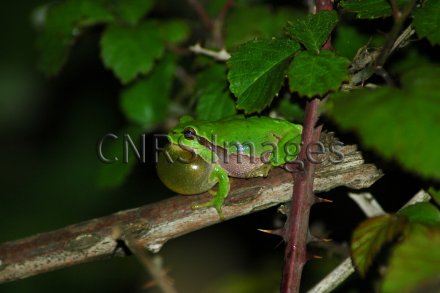Production year
2006

© Thierry LENGAGNE/CNRS Images
20100001_1092
Observation d'une rainette arboricole, "Hyla arborea", en milieu naturel, sur l'île Crémieu en Isère, durant sa période de reproduction en avril. Les mâles chanteurs se regroupent pour former des choeurs pouvant compter plusieurs centaines de mâles au moment de la reproduction. Chacun des mâles peut émettre près de 30 000 chants par nuit. Les caractéristiques des signaux acoustiques sont utilisées par la femelle pour sélectionner son partenaire. Une expérience menée en laboratoire a permis de déterminer ces caractéristiques : la fréquence, l'amplitude et la vitesse de répétition.
The use of media visible on the CNRS Images Platform can be granted on request. Any reproduction or representation is forbidden without prior authorization from CNRS Images (except for resources under Creative Commons license).
No modification of an image may be made without the prior consent of CNRS Images.
No use of an image for advertising purposes or distribution to a third party may be made without the prior agreement of CNRS Images.
For more information, please consult our general conditions
2006
Our work is guided by the way scientists question the world around them and we translate their research into images to help people to understand the world better and to awaken their curiosity and wonderment.